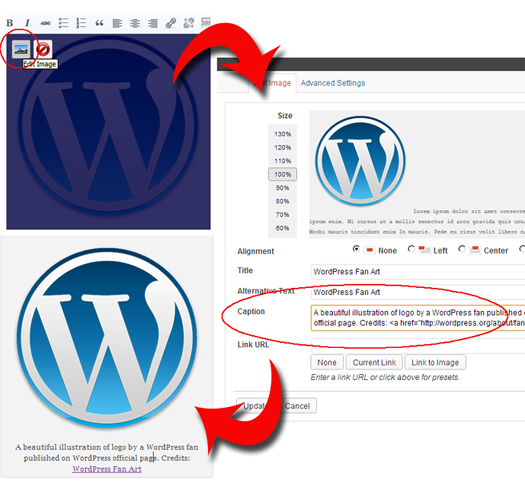While text content is the most important part of blogging, images play a vital role for adding more value to your content, irrespective of the subject of the blog. Images not only provide your readers great reading experience, they also play a very important role for search engine optimization and help you to enhance the meaning of your writing. Most people optimize their website for content but they hardly pay attention to use of images.

Here are some effective tips to optimize images on blog. We are not going to repeat some common tips like use of ‘alt’ tags, using descriptive file names, etc. They are really essential and you have probably read about them repeatedly.
1. Use ‘longdesc’ Tag When Needed
You already know about using ‘alt’ tag but do you know there is also an attribute for long description? You can provide a detailed description to your image by using longdesc for better SEO benefits. The great thing about longdesc tag is that you can also specify a link to a file describing the image.
Check out this example below in which an html file describing the image is used:
2. Host Images on Your Own Domain
People who upload images elsewhere and then link them to their articles are losing SEO ‘credit’. Upload images on your own domain! This is very serious in case of important images and infogrpahics.
Okay, if you are already famous and have thousands of visitors daily, you may use another domain to host images and save bandwidth.
3. Use JPG Files, Forget GIF at All
Which types of images are best optimized for websites and SEO? If you are still using GIF files, then avoid them. For images with transparent background, PNG files are widely used so GIF have become obsolete. For most cases, it is recommended to use JPG files which are best compressed and optimized. JPGs load faster on your page so you give better user experience and get SEO benefit. So always be careful on which types of images you are uploading.
4. Which is The Best Image Size?
Do not use too small or too large images. Readers will not like to see too small images and they are also given less importance by search engines. It is best to use proper sized images which are clearly visible. On the other hand, too large images take more time to load and it can also damage SEO.
Which is the best image size for your article? Most of the successful blogs use images having 500-600 pixel width.
If your blog post is something like photo gallery and you have to anyway use larger images (like sized 0.5-1 MB or more), put their thumbnails on your post and link them to their larger, original version. Never stuff your page with many large images.
5. How Many Images
It is recommended to use images with proper ratio to the length of your post. It should not look like a photo gallery post. One image is sufficient for a 500-1000 words post. If your post larger than 1500-2000 words, it is best to use two or more images.
6. Image Location and Content
Where you have used the image is very important. If you are using one image for the post, it is best to use it after first paragraph of your article. If you are using multiple images it is best to place it around relevant topic or text in your article.
Avoid placing the image before the beginning or after the end of the article (never!) which is not very effective. The key is that the image must be wrapped around by the content.
7. Use of Captions
If you want to give importance to an image, do use a caption describing the image. Reader will immediately feel that you have used the particular image for a purpose. If an important image is placed without a caption, it will be taken for granted.
If you are using someone else’s image, make sure to read their policy or terms of use. In most cases, they would ask you to give a credit by mentioning author’s name.

Adding caption to an image in WordPress
WordPress provides a great and easy way to add captions for your images. While in the edit mode of a post, simply select the image and the “Edit Image” button will appear, clicking on that opens a popup where you can change caption and other attributes and styles of the image.
8. Editing Images
When you want to edit or resize an image, do not be too lazy to use a professional tool like Photoshop. Using a cheap tool will damage the quality of your images on editing or resizing. Tools like Photoshop take care of each pixel and keeps quality of image as it is.
If you are using photos from your own camera, make sure they are high quality with better contrast and sharpness.
Conclusion
Along with using basic image optimization tricks, using the above tactics in addition will help you noticeably improve ranking in search engines. Sometimes it is not always possible to use all of them, but combining some of them as per requirement of your post will really help the overall SEO of your blog.
Have you found any ideas useful for image optimization? Please comment and share them with us!
Thanx Jignesh, placement of images plays crucial role for a website readers.
Himanshu Sethi has recently posted on Sample Question paper
UPSC Civil Services Preliminary Exam Previous Year Question Paper